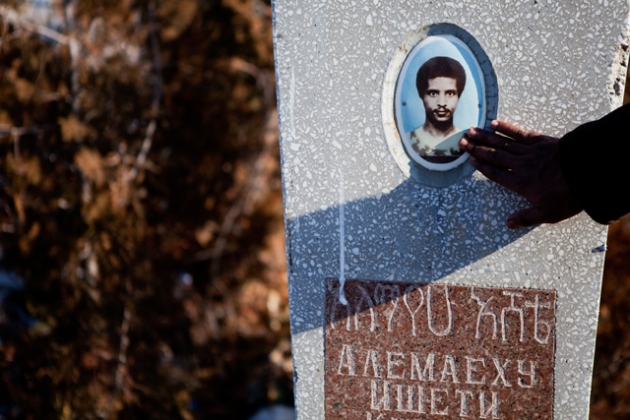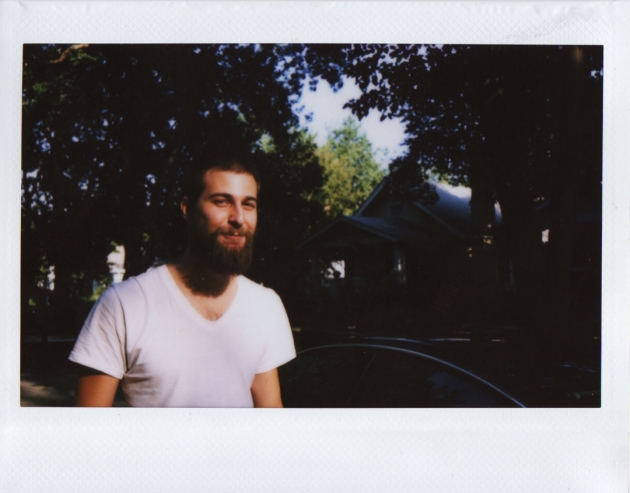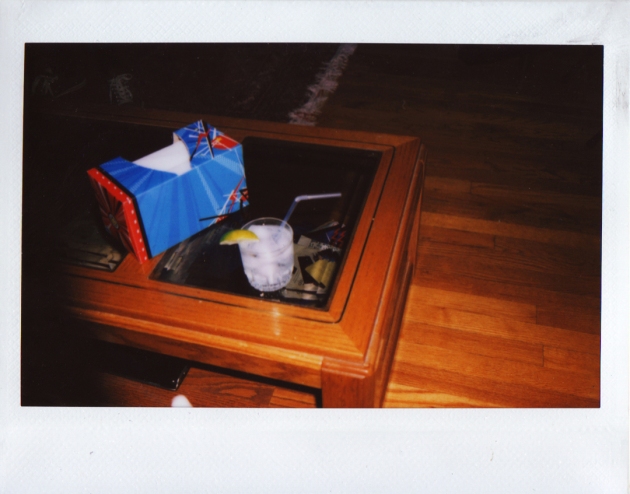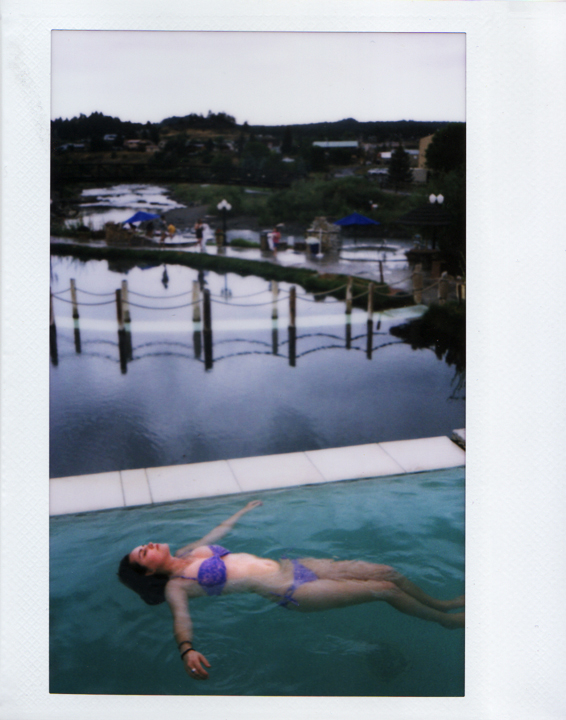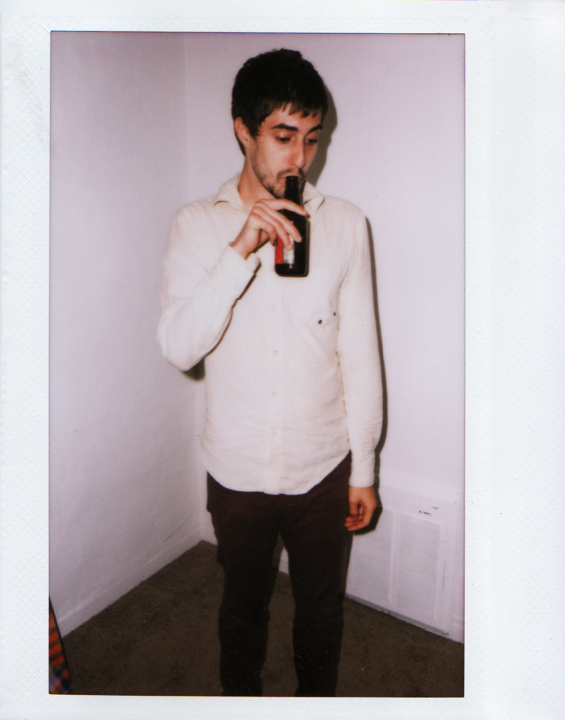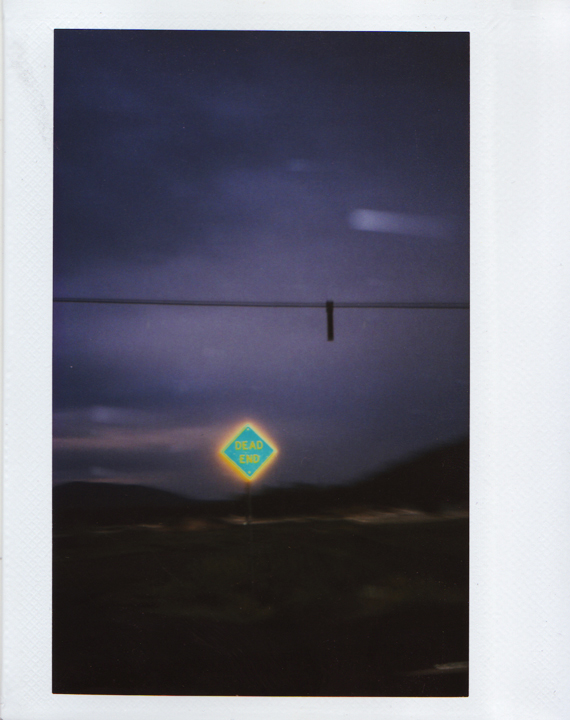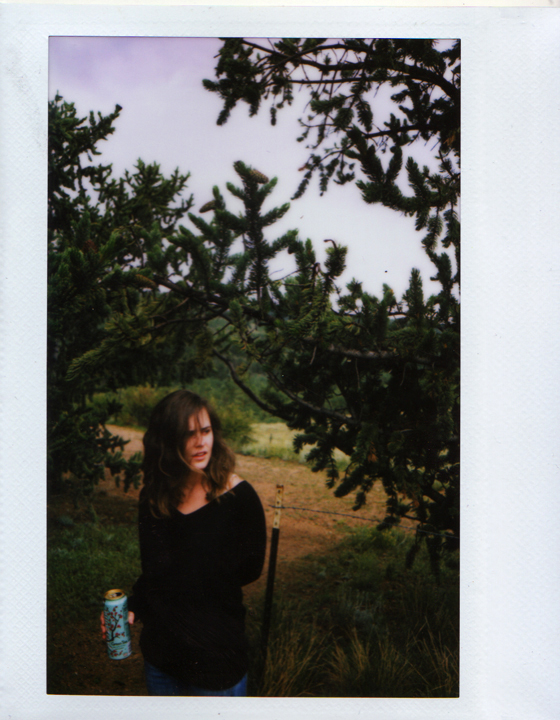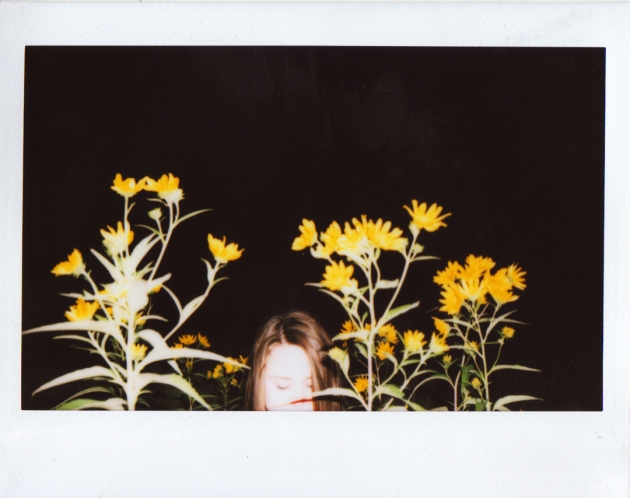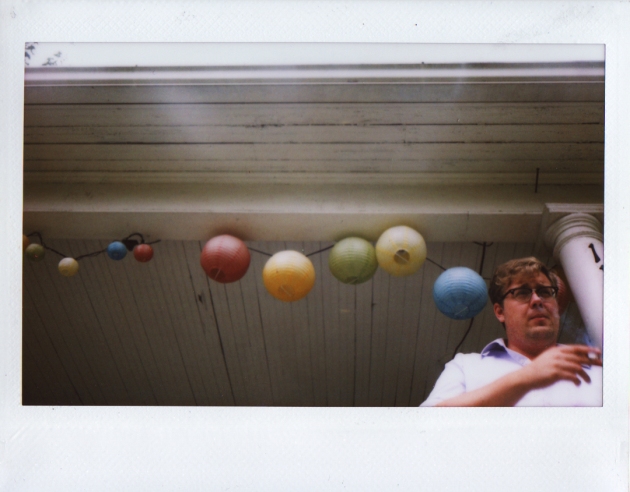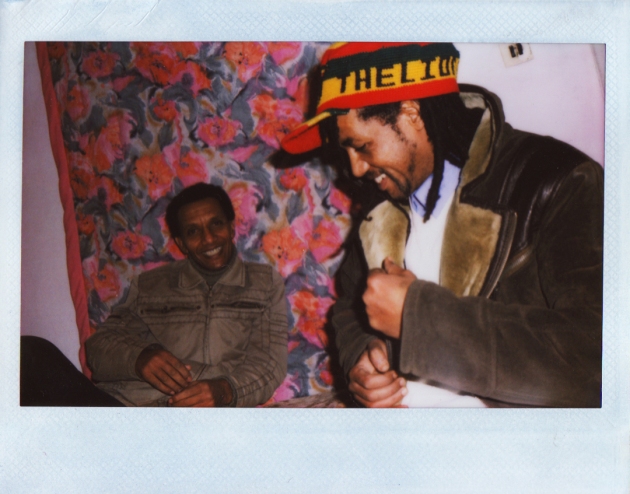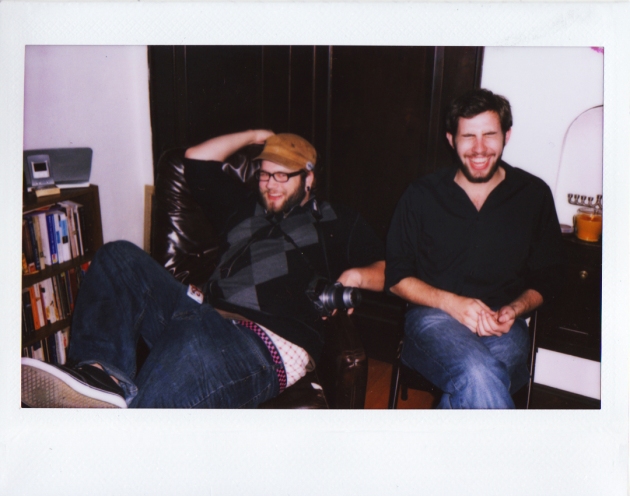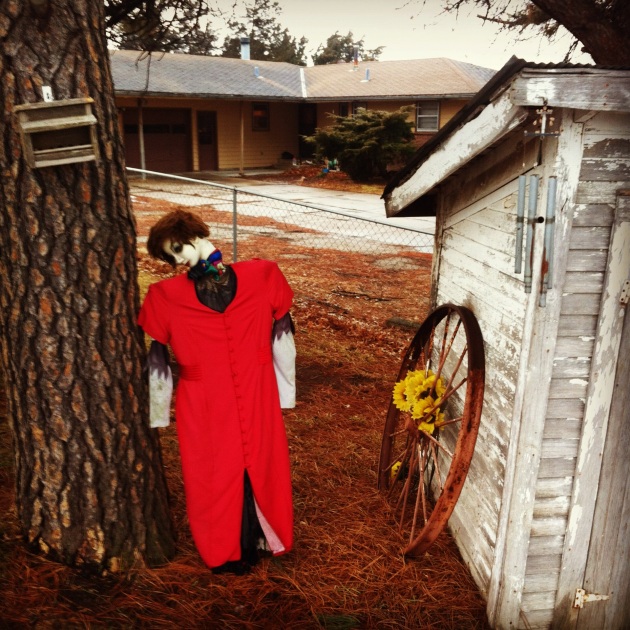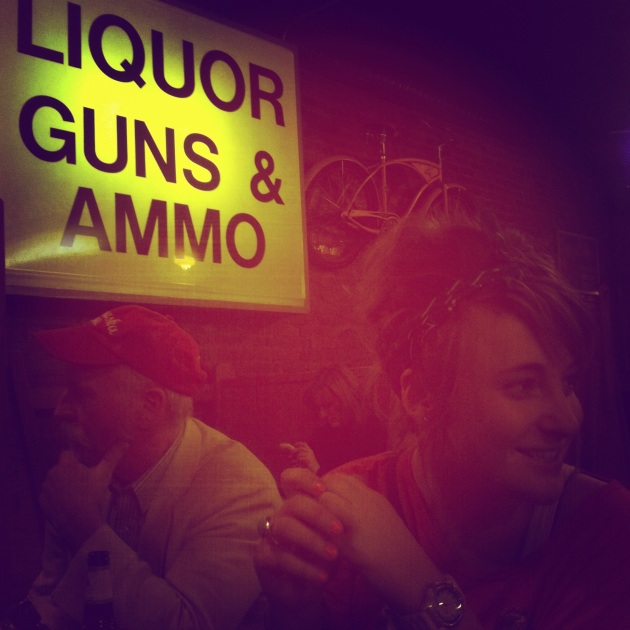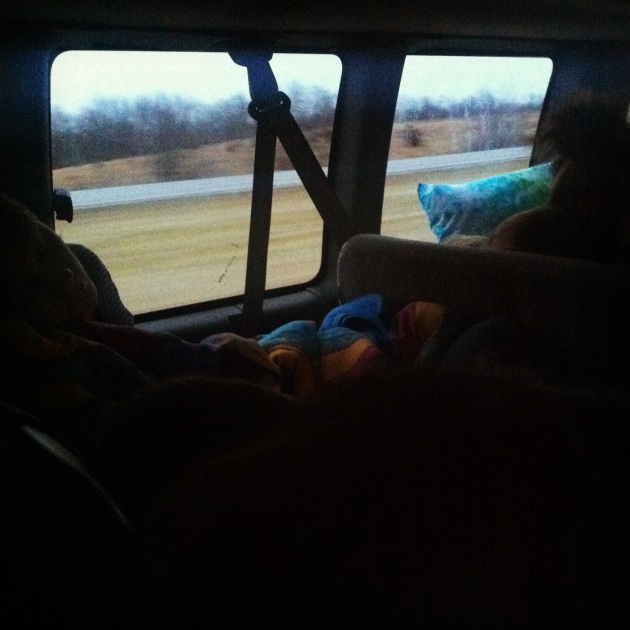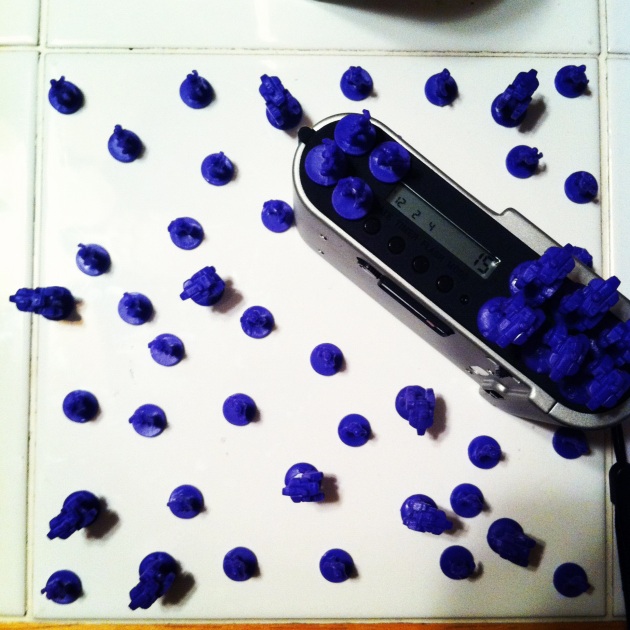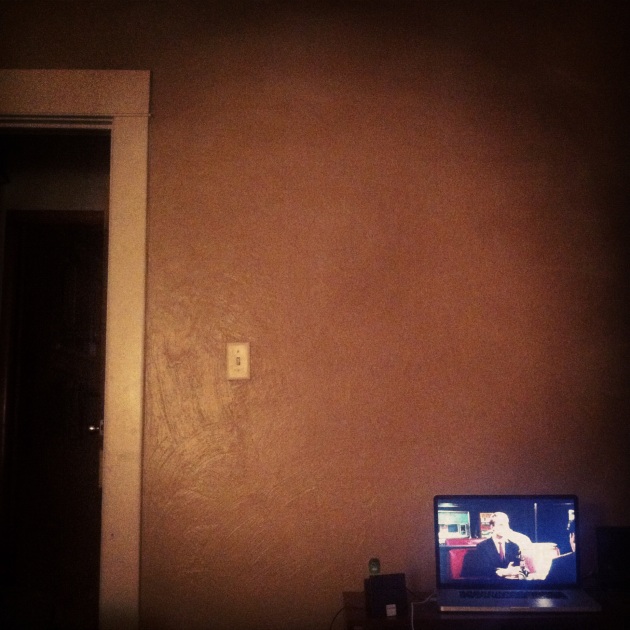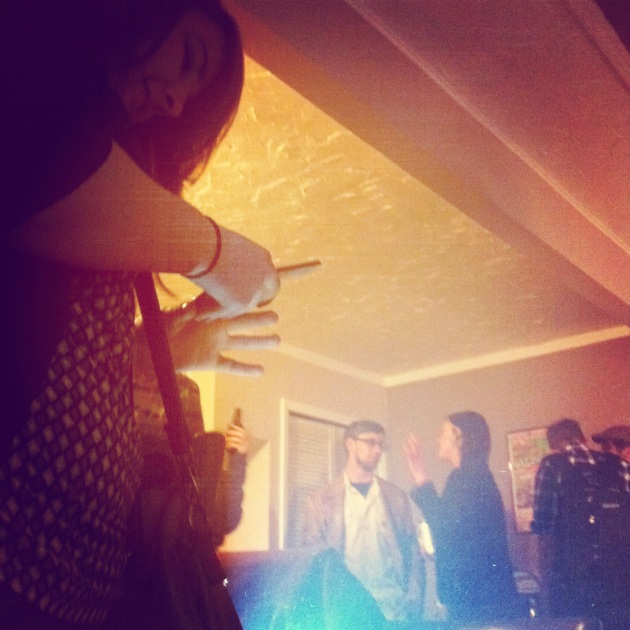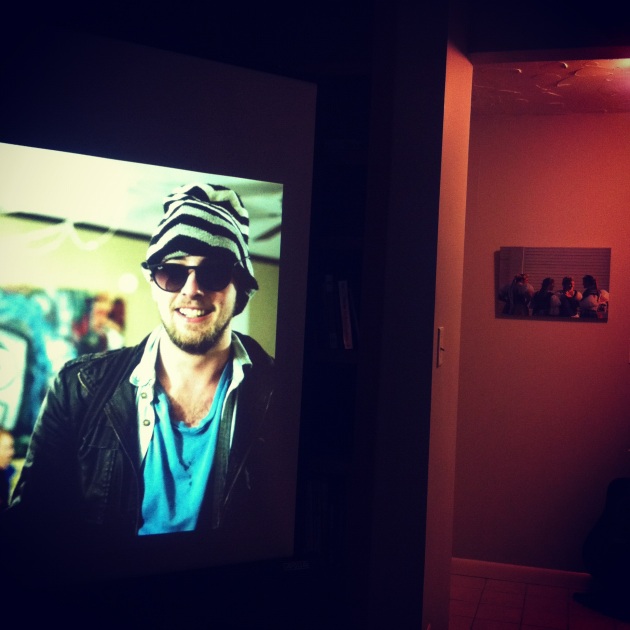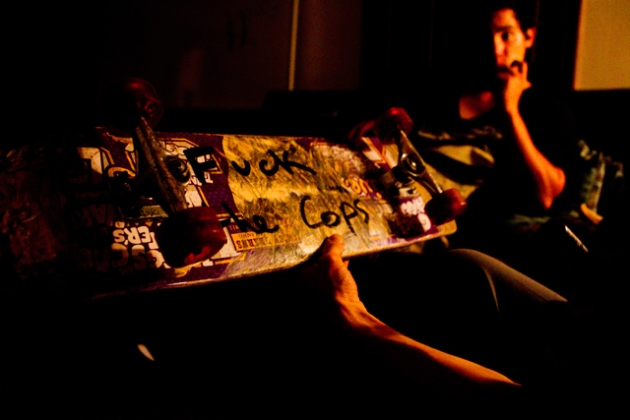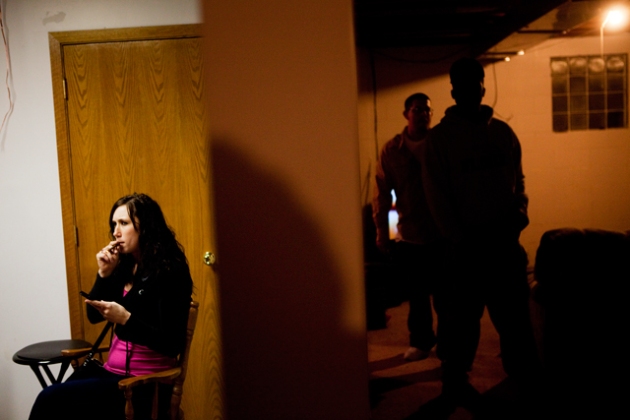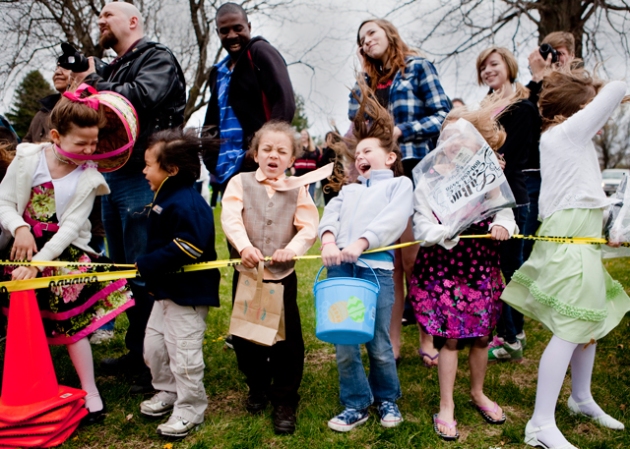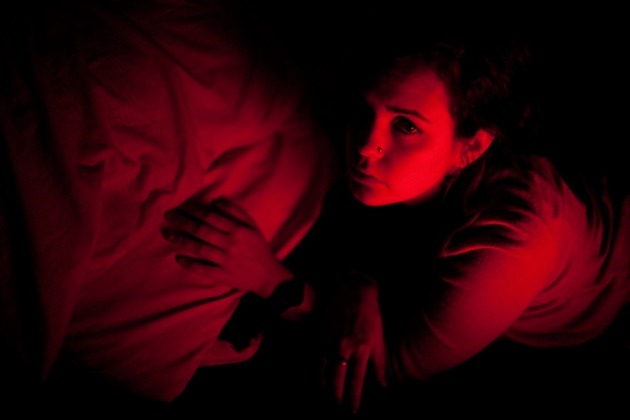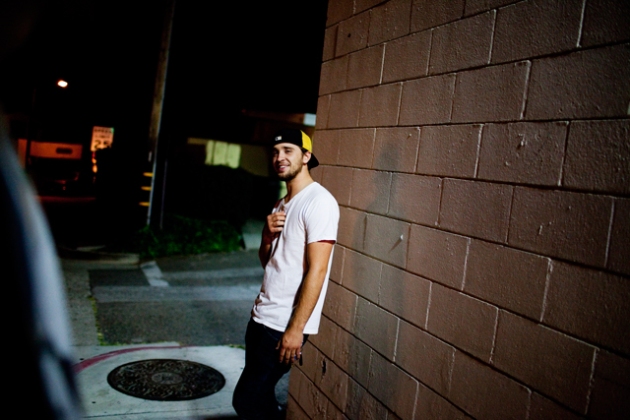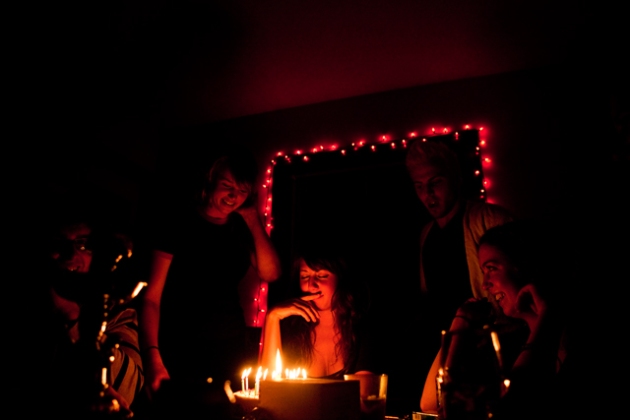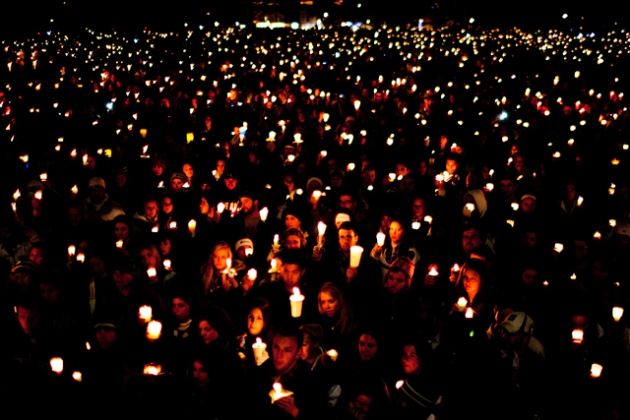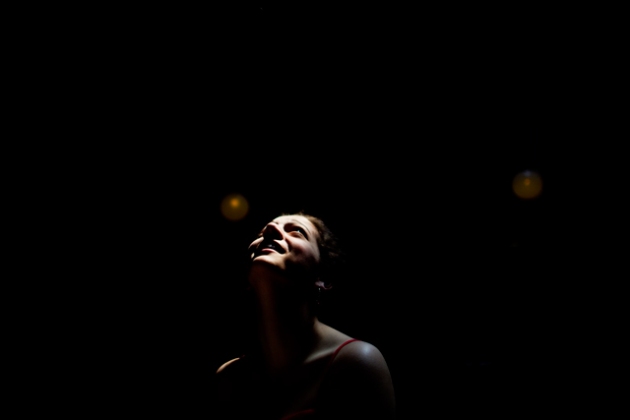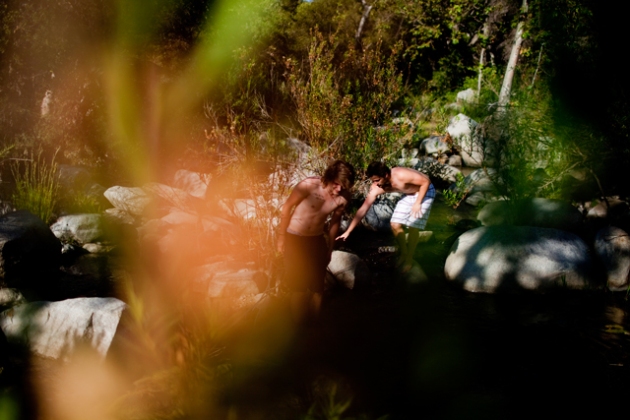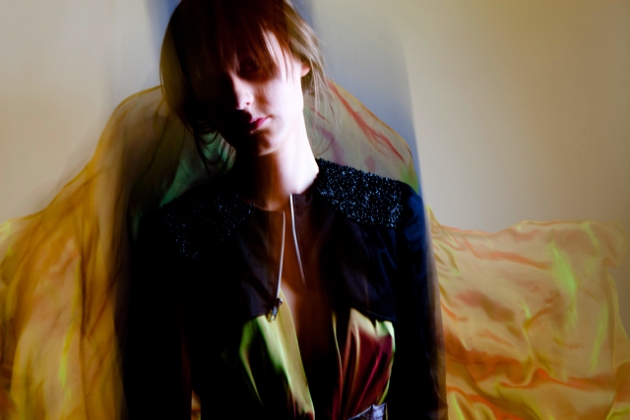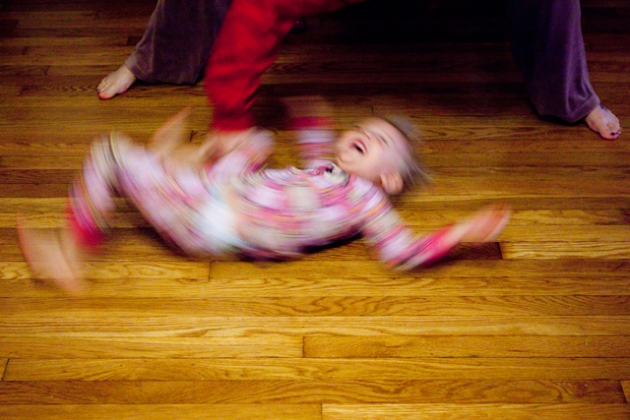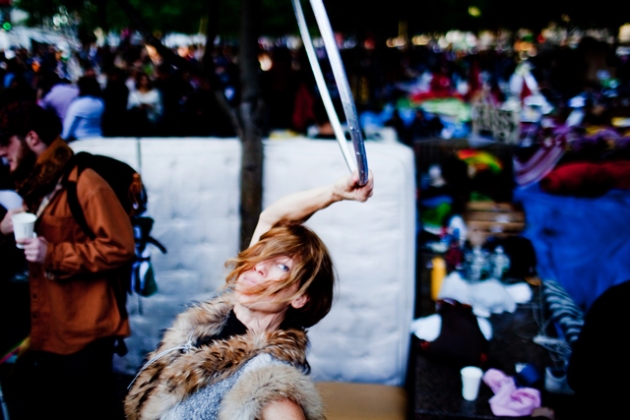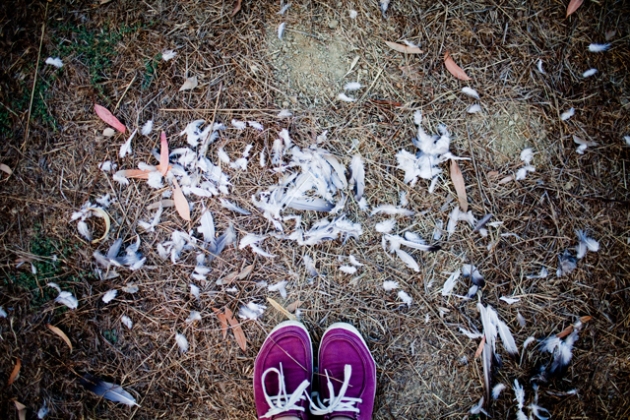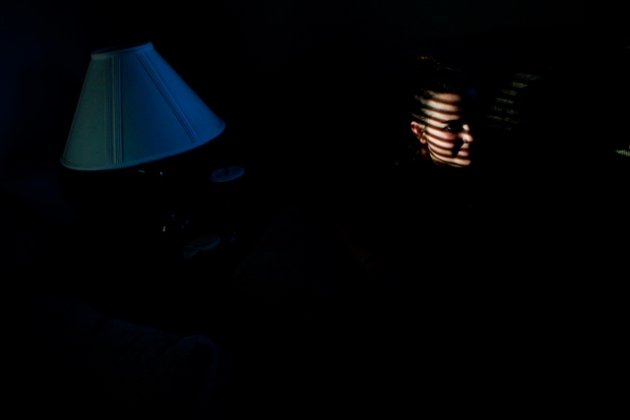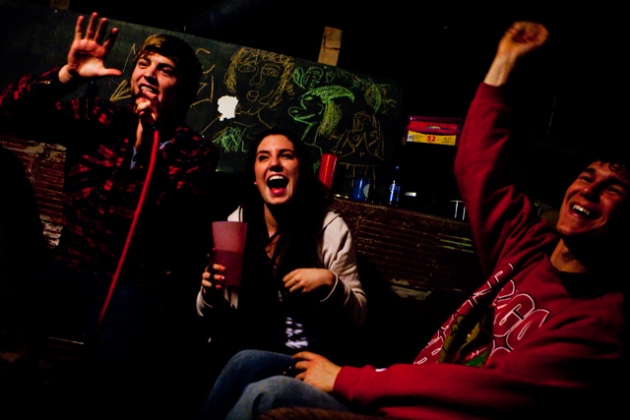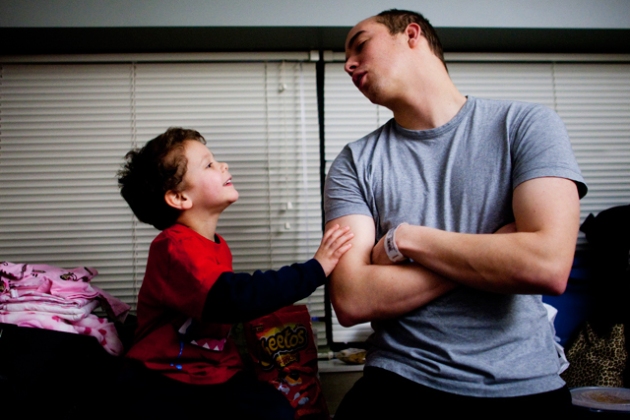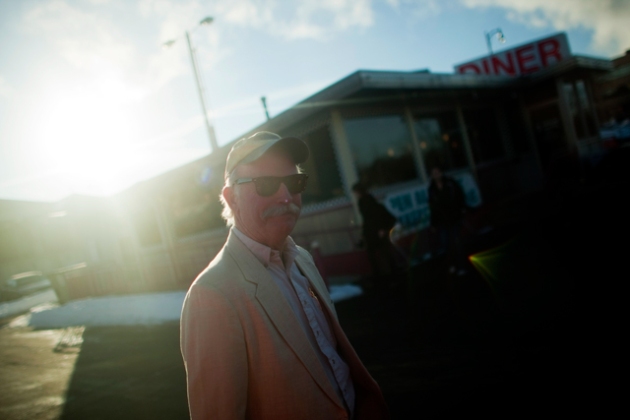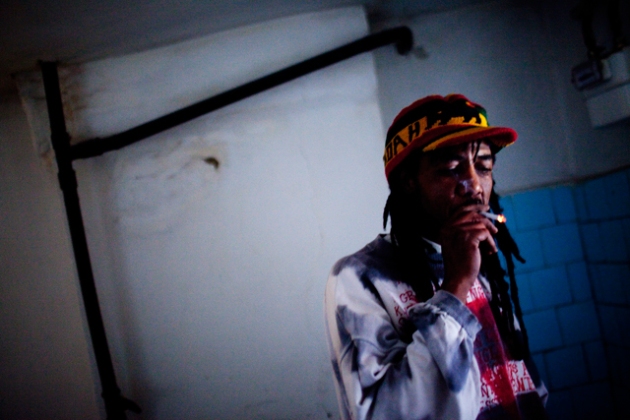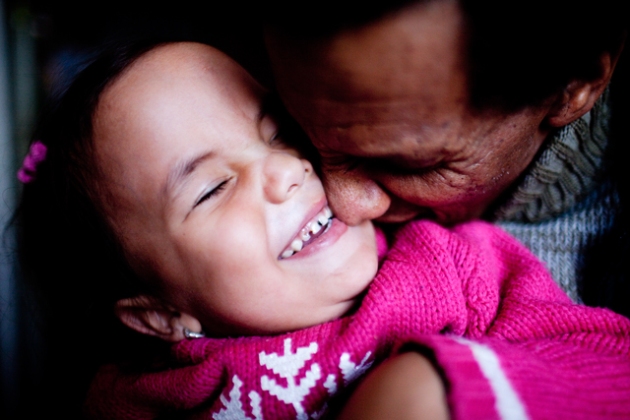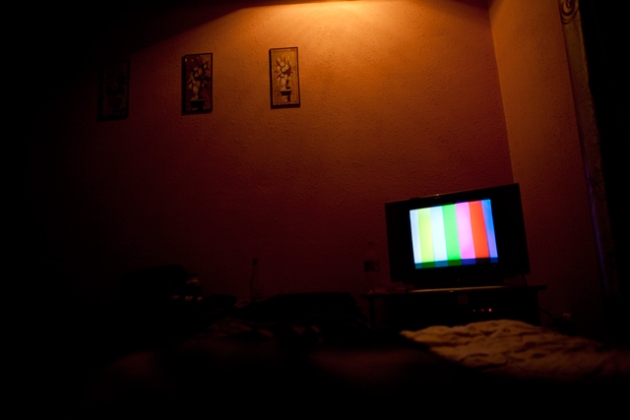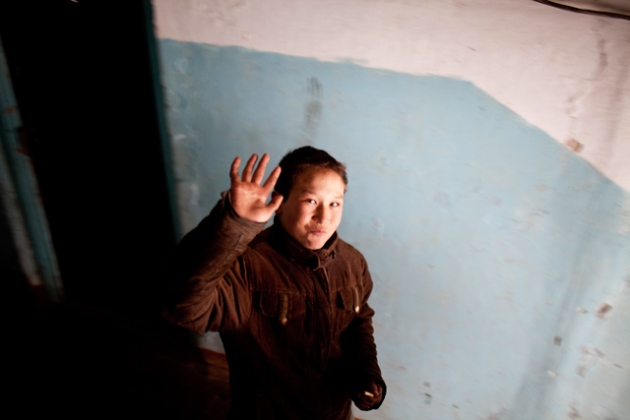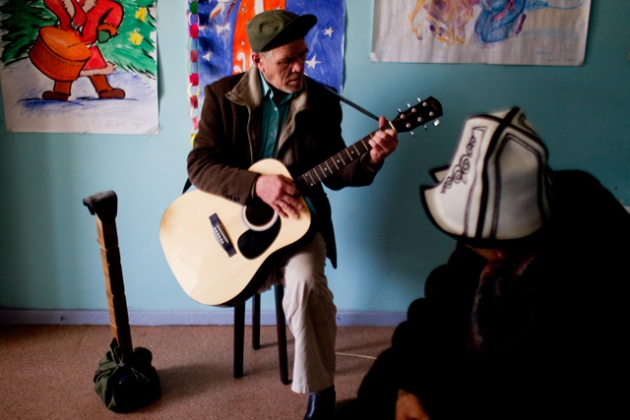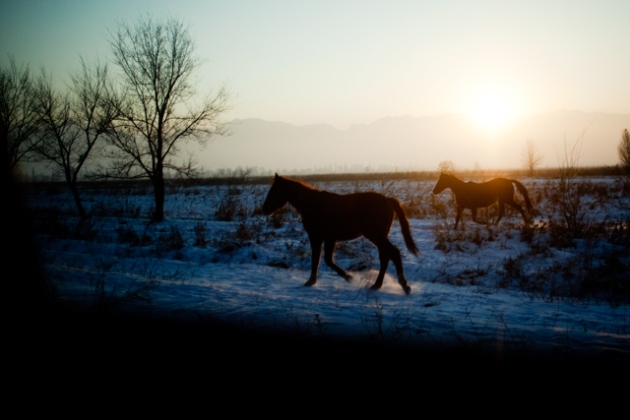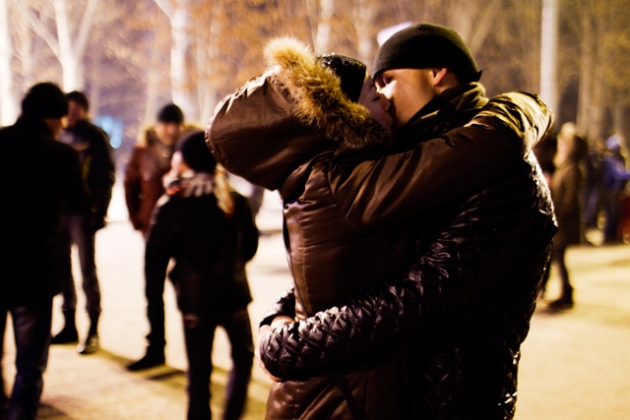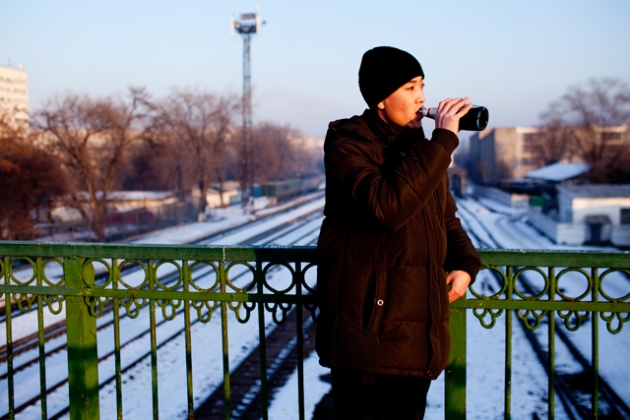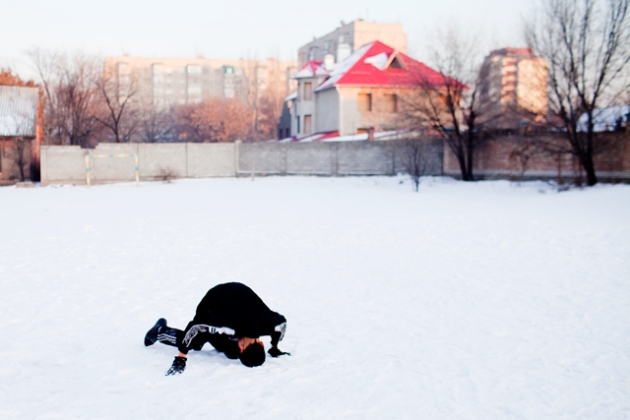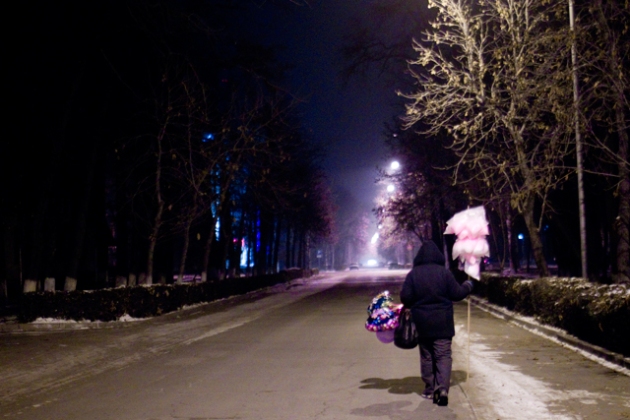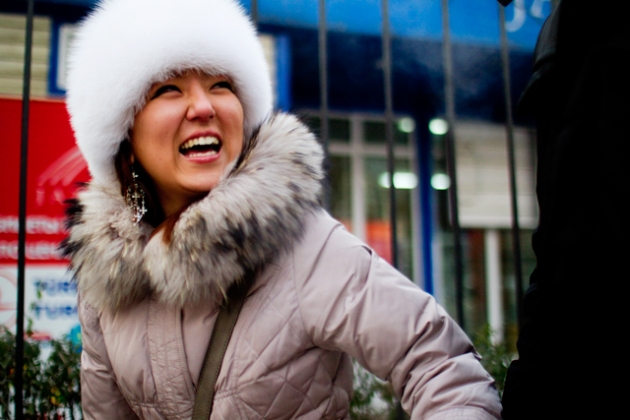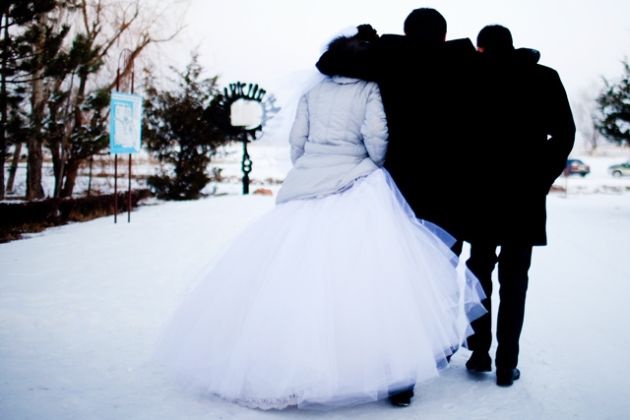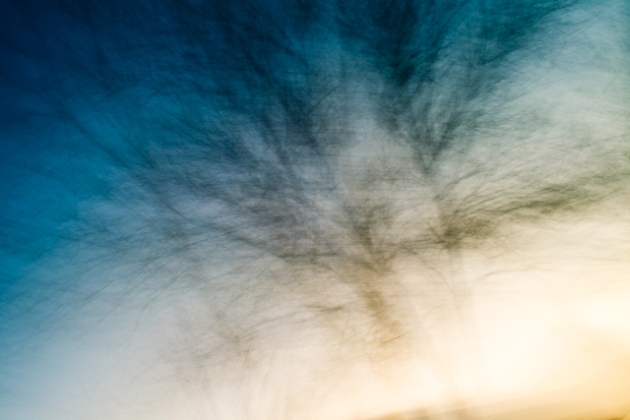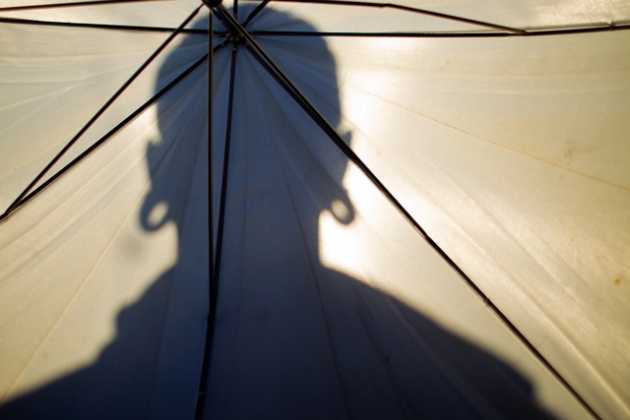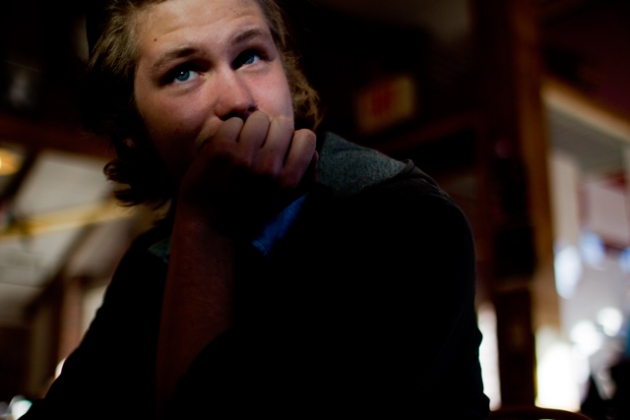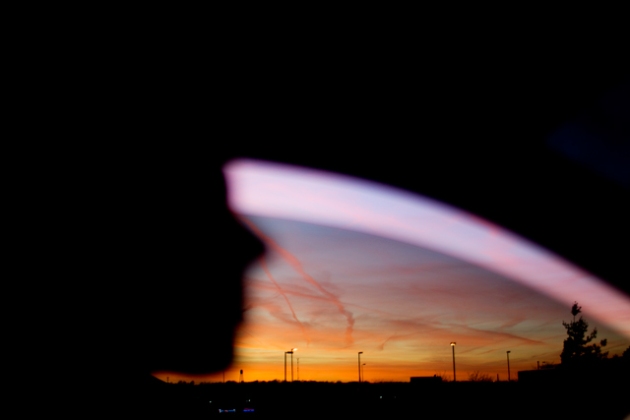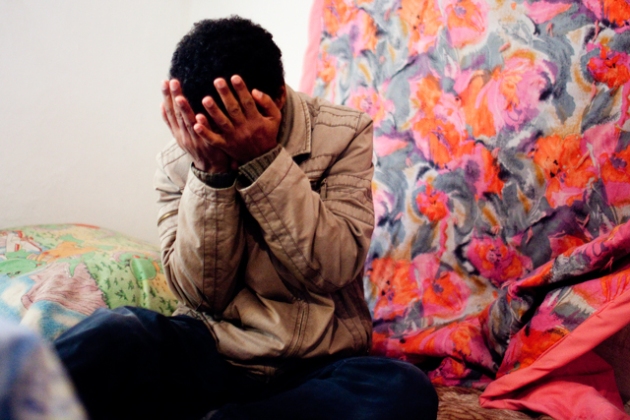
This is a story we didn’t expect to do while in Kyrgyzstan.
In fact, we didn’t even know this story existed before the first night in the country.
To give some background: In 1989, approximately 80 Ethiopian Air Force members traveled to TokMok, Kyrgyzstan for flight training. And when the Soviet Union fell in 1991, so did the regime they were a part of in Ethiopia. Because of this, it wasn’t safe for them to return home. So they had to settle in for a few years. But being one of the few black people in Kyrgyzstan isn’t easy in any sense of the word. The group dealt with a wide range of discrimination, in everything from walking down the street to having burial services for their friends to applying for a passport. Above is a man named Haymanot, who was our main contact within the community, sitting on the couch/bed of his friend Nasir (you’ll meet him later), putting his hands to his face in an expression of exhaustion. Exhaustion beyond the ‘needing sleep’ sense of the word.
After a while in the country, some of the Ethiopians died, some found ways to leave and some settled down, married and had kids.
Again, this brought discrimination toward both their wives and children.
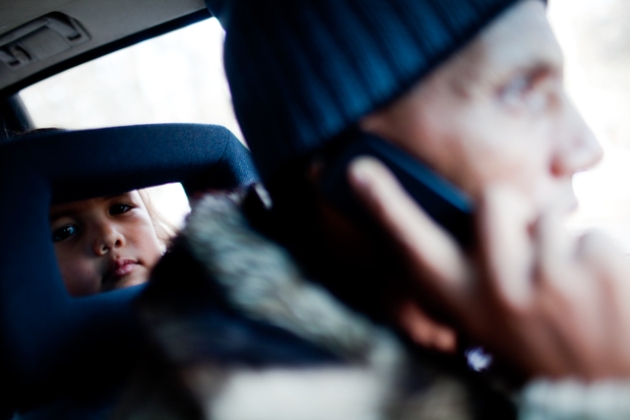
Enette (above), one of Haymanot’s two daughters, was the sweetest, cutest girl I think I’ve ever met. She would hop around their small, one bedroom apartment like a frog, trying to model after a cartoon she had watched.
But I imagine this happiness comes only because of her young age. While working on the story, we heard countless anecdotes about their kids being shunned by the other kids at school. One of Haymanot’s sons had actually been close to murdered by the police. Nasir showed us his stab wounds, one directly beneath his heart. The kids get called “negro” or “nigger” at school on a constant basis.
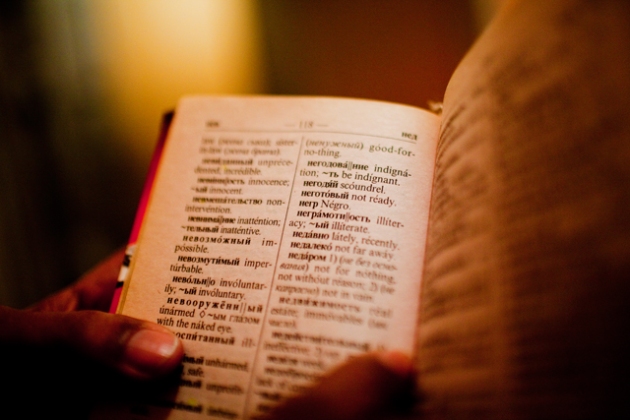
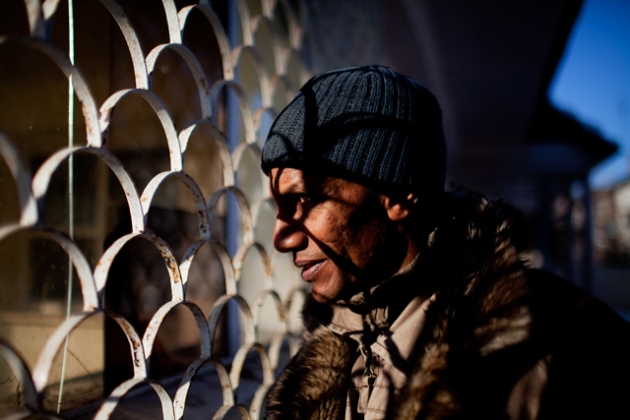
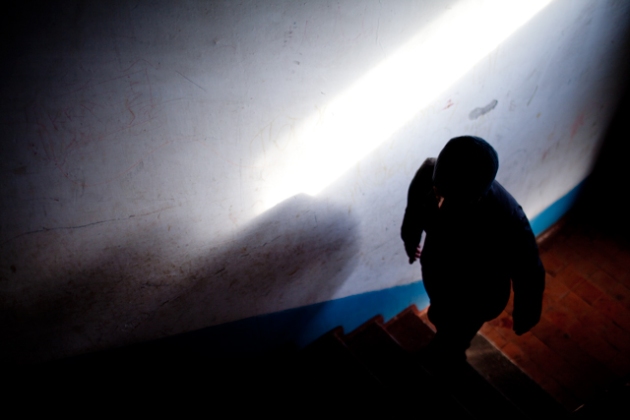
Haymanot’s wife, Denada, was incredibly nice and cared for her family just as much as Haymanot. It was great to see the few Kyrgyz people who did accept the group of Ethiopians. Haymont is a taxi driver, and he gets along with the other drivers who park at the same spot as him. But everywhere they went there were stares, and you could tell that the overwhelming sentiment was that they were different, and that they didn’t belong there.
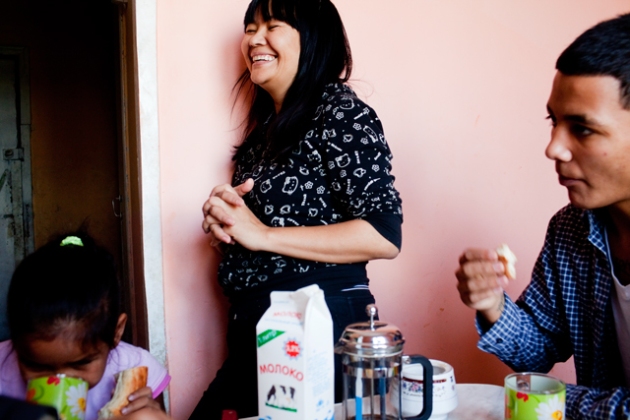
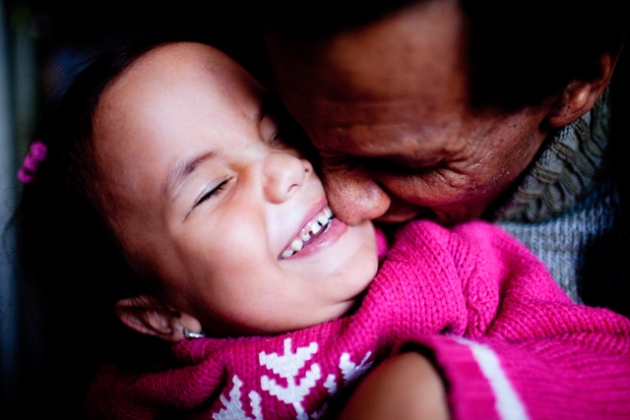


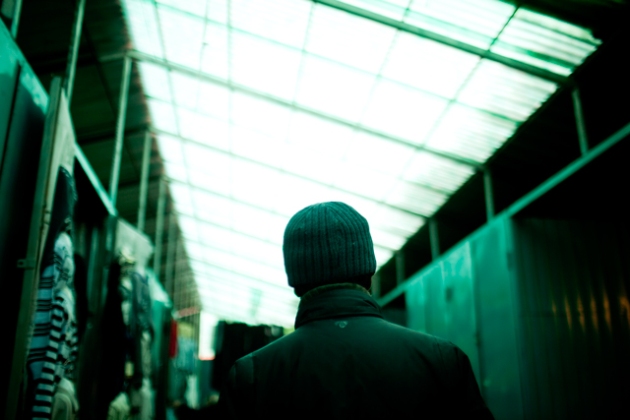
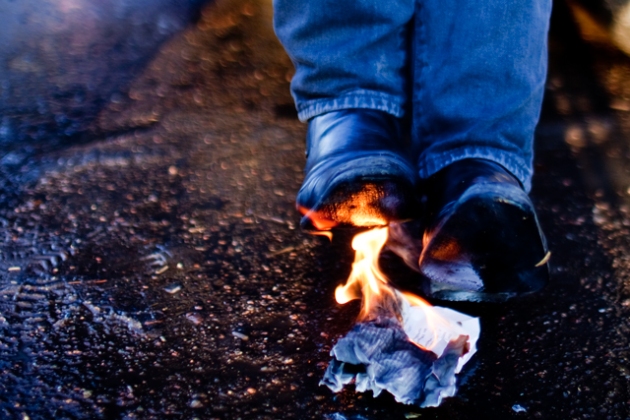
As I smoked a cigarette with Nasir (below) in his kitchen, he stopped for a minute, pointed at the cigarette, and said, “dangerous life!” I laughed along with him and his tentative English, because it was the right thing to do, but in my head I couldn’t stop thinking how someone who has been through as much as this group of people could joke about cigarettes being dangerous. Comparatively, their body housed stab wounds, their ears were permanently scarred from the hateful things that have been directed toward them and their minds were in a constant state of worry and fear for their families…
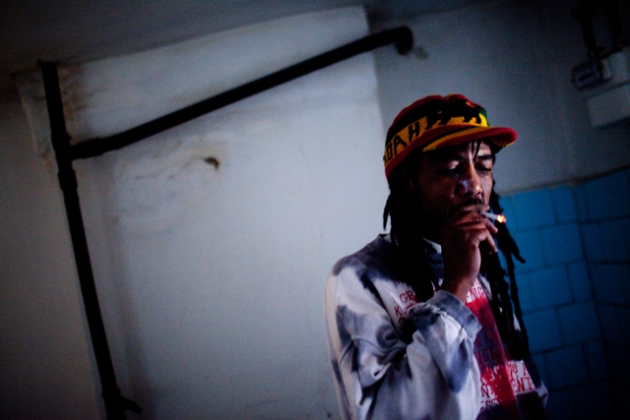

The only work Nasir could find was at a restaurant/club called Gavayi. Translated from Russian, it means Hawaii. To the Kyrgyz, Hawaii involved statues of a cheetah taking down a mountain lion. On the other side of the building you could find a statue of an alligator. They had a skewed sense of the state, but it made for extravagance in terms of the Kyrgyz dining experience.
His job at Gavayi is to perform a dance, and to dance along with all of those attending the restaurant for the remainder of the evening.
But Nasir isn’t happy there. It gets him by, but he has to spend every night of the week (only two nights off per month) being the ‘black guy’ that people swarm to and want their picture taken with. And when the clients get to the tipping point of the vodka bottle, their actions get more intense, they get more aggressive and it was noticeable that Nasir was being pulled around like a show animal.
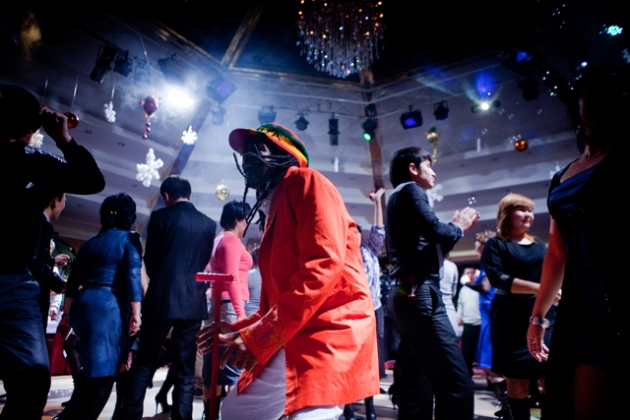
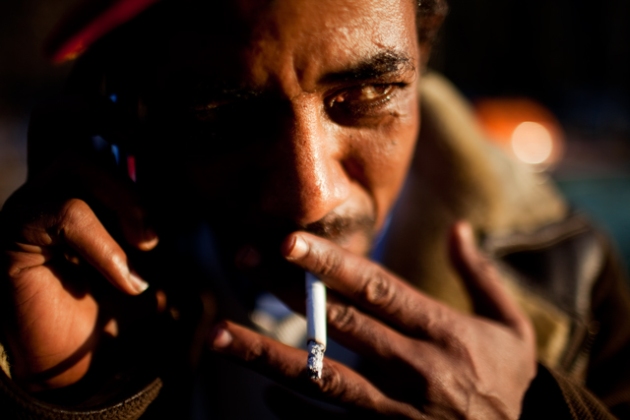

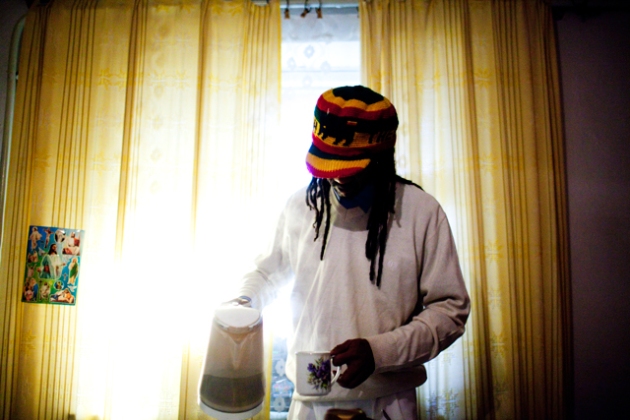
Of those who came in 1989 but aren’t around anymore are two friends of Nasir and Haymanot. Both died unnaturally, and neither were investigated by police.
The first got into a domestic dispute with his wife, and was then attacked by a group of Kyrgyz for that. The killers called the cops and told them that there was a body they needed to come pick up. The police then called Haymanot and said, ‘we have your friend, he’s dead, you need to come pick his body up.’ They refused to perform an autopsy. They refused to investigate.
After much insistence by the small Ethiopian community, one of the killers got a short amount of jail time. The other never received any punishment.
The Ethiopians had to go to the graveyard, dig a grave and bury their friend themselves because no one would touch the body.
It made me sick to hear these stories. But this should not be taken as a negative generalization about the Kyrgyz people as a whole. I speak specifically to this situation and my observances during my time spent with the Ethiopians.
I will forever be indebted to Haymanot, Nasir, Cesar, Hailu, Enette, Stefanie, Denada, Abel and Tedross. They’ve been through so much, but they still allowed me into their homes for a week straight. It strikes me with a form of guilt to have made them remember those terrible stories during video interviews. To them, my presence there every day was a reminder that they had lived this life, and that they were still living it.
“For any guy, future is hope,” Haymanot said. “But for us, every past day is better than today and tomorrow.”
I can only take some of that future hope and pray that the finished result of the multimedia piece from this story can help this community in some way.
